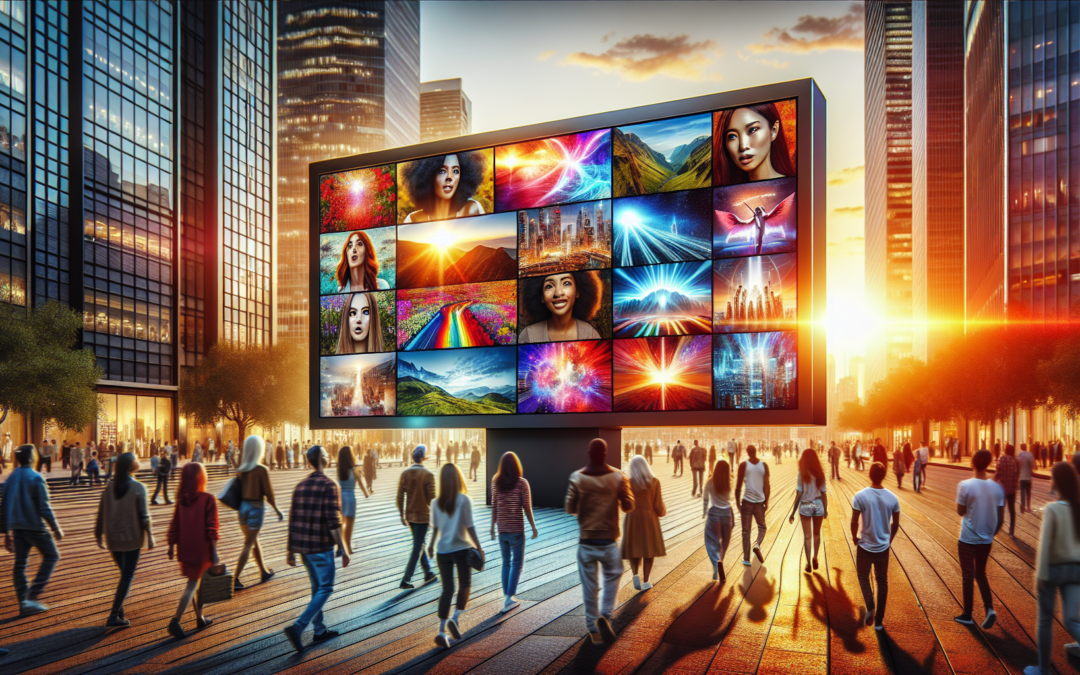Digital advertising is more than a series of clicks and impressions; it’s an art form that weaves emotions into a tapestry of brand storytelling. In an era where attention is our most precious commodity, digital advertising holds the power to move hearts, challenge perceptions, and ignite change. People aren’t just looking for products; they’re searching for experiences that resonate on a deeper level. By tapping into the emotional fabric of their audiences, brands can foster meaningful connections, turning potential clicks into lasting relationships. Welcome to the journey of digital advertising that transcends the transactional, crafting pathways to genuine engagement.
Harnessing the Emotional Power of Digital Advertising
In the digital age, where screens dominate our daily interactions, digital advertising stands as a beacon—one that can captivate, inspire, and evoke emotion. It’s a platform where creativity converges with analytics, creating opportunities for brands to connect with consumers on a personal level.
The Science Behind Emotional Advertising
Understanding the psychological underpinnings of digital advertising is crucial. Humans are inherently emotional beings; their purchasing decisions are often guided by feelings rather than cold logic. Incorporating key elements of psychology into digital advertising can significantly elevate its effectiveness. Emotional triggers like happiness, surprise, and fear can be artfully woven into campaigns to create lasting impressions. For instance, using positive imagery and inspiring narratives can foster joy, while scarcity or urgency can instigate immediate reactions rooted in FOMO (Fear of Missing Out).
Storytelling: The Heart of Digital Campaigns
Behind every successful digital advertisement lies a compelling story. Crafting stories that resonate with audiences goes beyond simply showcasing a product or service—it’s about conveying a narrative that aligns with consumers’ values, aspirations, or challenges. A relatable story can transform a common advertisement into an unforgettable experience. For more insights on creating authentic brand narratives, check out our previous post on The Art of Storytelling in Marketing.
Visual and Emotional Symbiosis
The key to maximizing the emotional impact of digital advertising is often found in the marriage between stunning visuals and emotive content. It’s not just about capturing attention but maintaining it long enough for the message to become ingrained in the viewer’s memory. Incorporating high-quality visuals complemented by well-crafted emotional arcs can create a synergy that captivates the audience.
When you think of the most successful digital campaigns, iconic images often come to mind—an evident testament to the power of visuals. Moreover, platforms like Instagram, accessible via RP Summit’s Instagram, exemplify the dominance of visual content in engaging users.
Data-Driven Emotional Insights
In digital advertising, intuition must be balanced with data-driven decisions. By leveraging analytics, brands can uncover which emotional messages resonate most effectively with their target audience. Modern digital advertising platforms offer a wealth of data detailing consumer behavior, preferences, and engagement patterns. Using this data, brands can fine-tune their emotional approaches to maximize impact.
Some innovative companies also utilize Artificial Intelligence and Machine Learning to predict and adapt to emotional responses in real-time, creating highly personalized advertising experiences that feel uniquely tailored to each consumer.
Building Long-Term Relationships Through Emotion
Digital advertising should not be viewed merely as a way to increase immediate sales; it should be a tool for fostering long-term relationships. By consistently delivering emotionally resonant messages, brands gain not only customer loyalty but also create brand advocates who are more likely to share their positive experiences with others. This process transforms consumers into active participants in their advertising journey.
To delve deeper into building relationships through digital marketing strategies, take a look at our detailed guide on Customer Engagement in the Digital Era.
The Role of Social Media
Social media platforms have revolutionized the way we interact with digital advertising. They serve as bridges connecting brands directly with consumers, providing opportunities for real-time emotional connectivity. Platforms such as Facebook and Twitter host a battleground for emotive storytelling where brands compete for attention among the noise of their competitors.
Each social network has its distinct culture and, therefore, requires a tailored emotional approach. Recognizing the nuances of consumer behavior across these platforms can empower brands to target emotions more effectively and create a more coherent brand image.
Innovation in Augmented and Virtual Reality
As the digital space evolves, so does the potential for emotional engagement. Augmented Reality (AR) and Virtual Reality (VR) have opened up new realms for digital advertising. By merging the real world with an interactive digital layer, AR and VR provide immersive experiences that can evoke powerful emotions—from awe to empathy, excitement to curiosity.
Brands can now offer virtual experiences—letting consumers “try” products in a simulated environment or experience a brand’s story in a 360-degree format. The future of digital advertising lies in these innovations, pushing the boundaries of what we thought possible.
Conclusion
The fundamental goal of digital advertising is to create connections that transcend geographical and cultural barriers, bringing consumers closer to brands in a more meaningful way. By integrating emotional insights with innovative digital strategies, a brand not only captures attention but also maintains a lasting presence in the consumer’s heart and mind. Stay connected with us to explore more insights and trends that define successful digital advertising strategies.
Explore more cutting-edge insights from RP Summit and follow us on Facebook, Twitter, and Instagram for the latest updates in the world of digital advertising.

